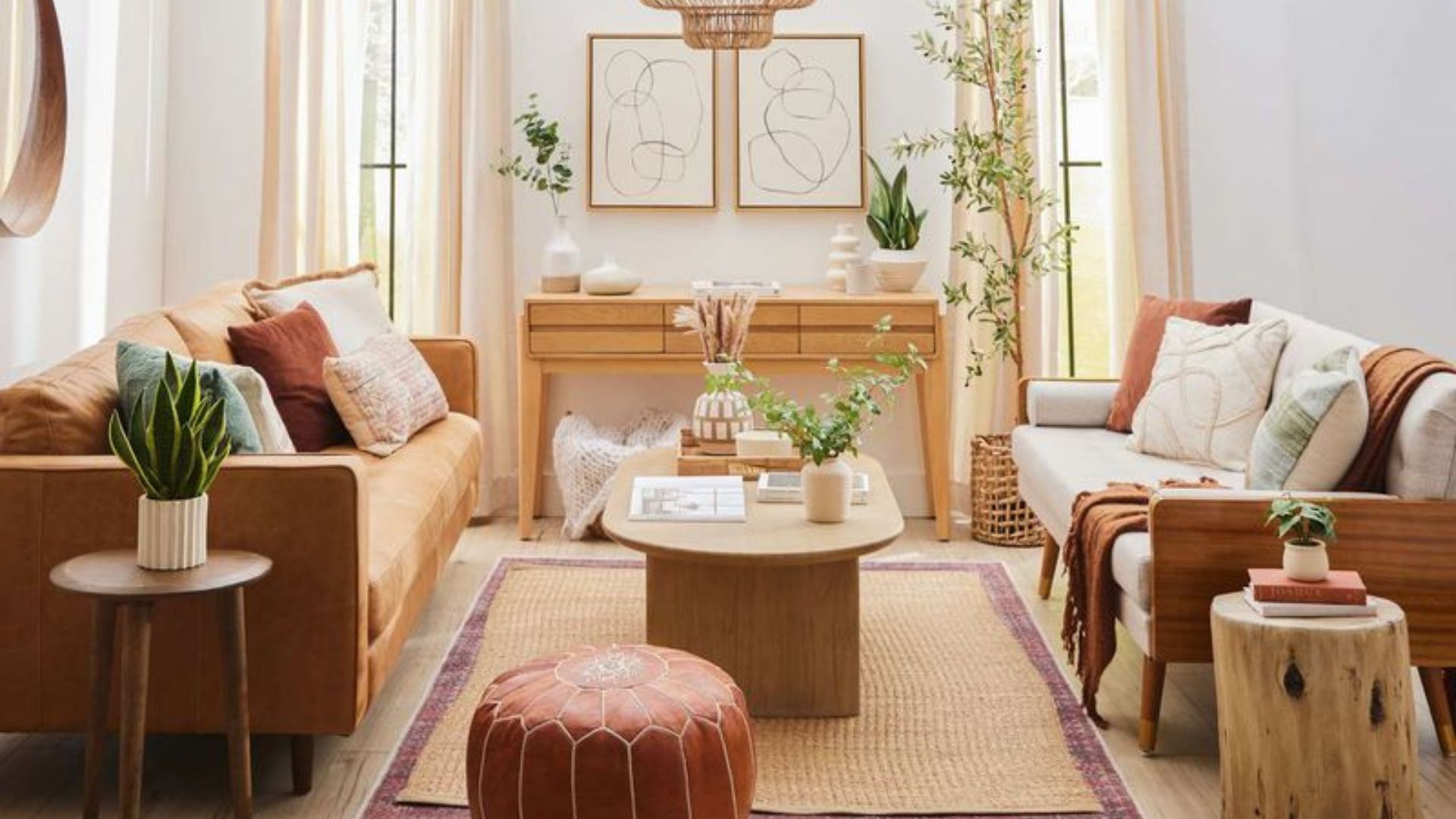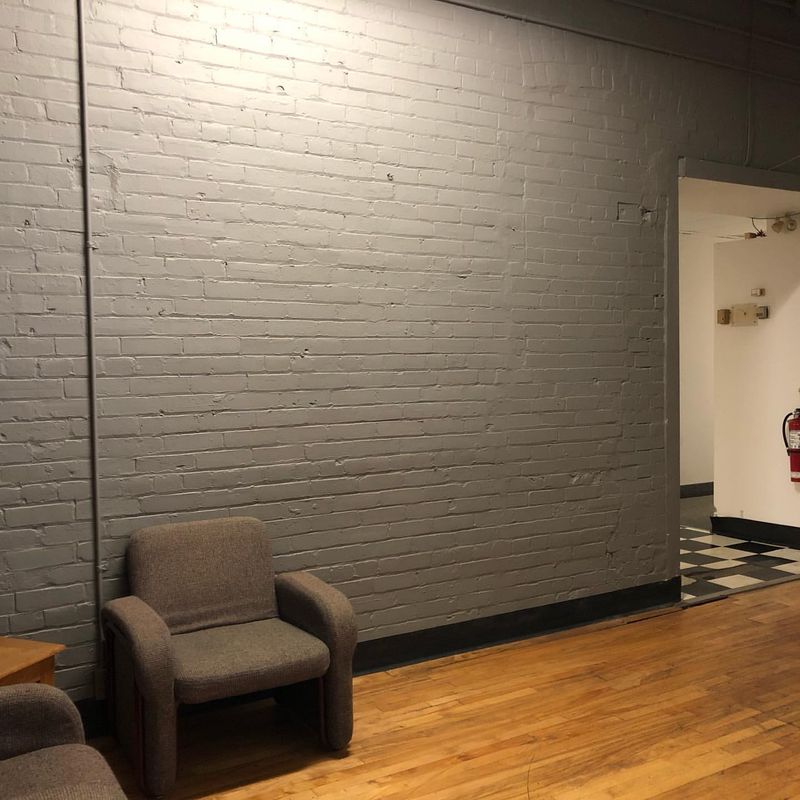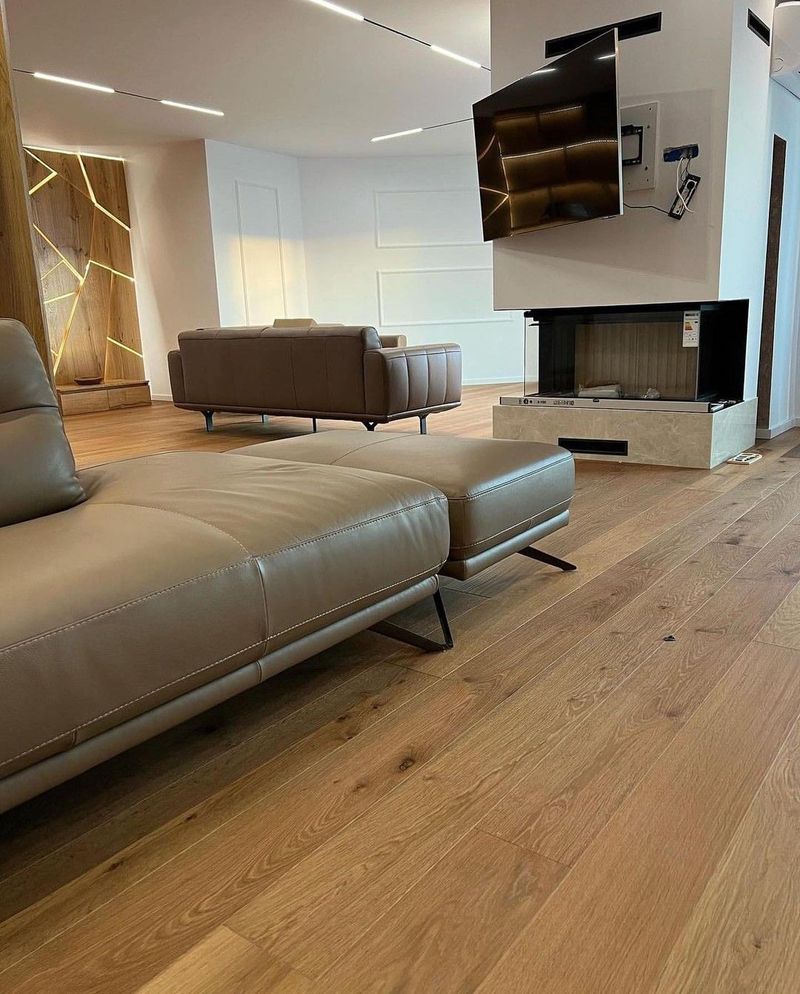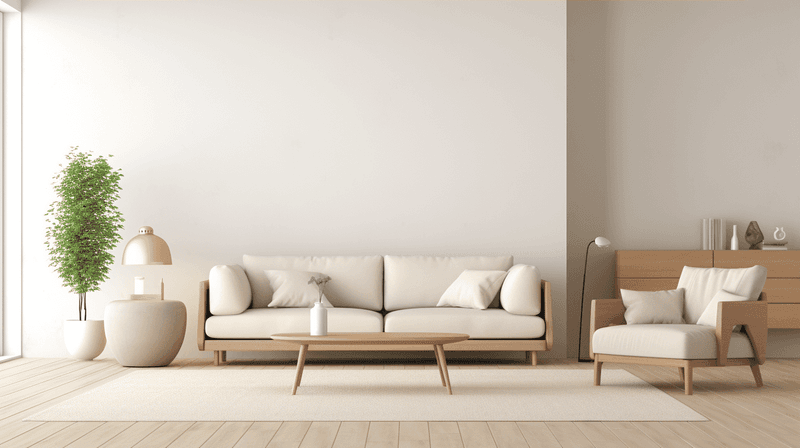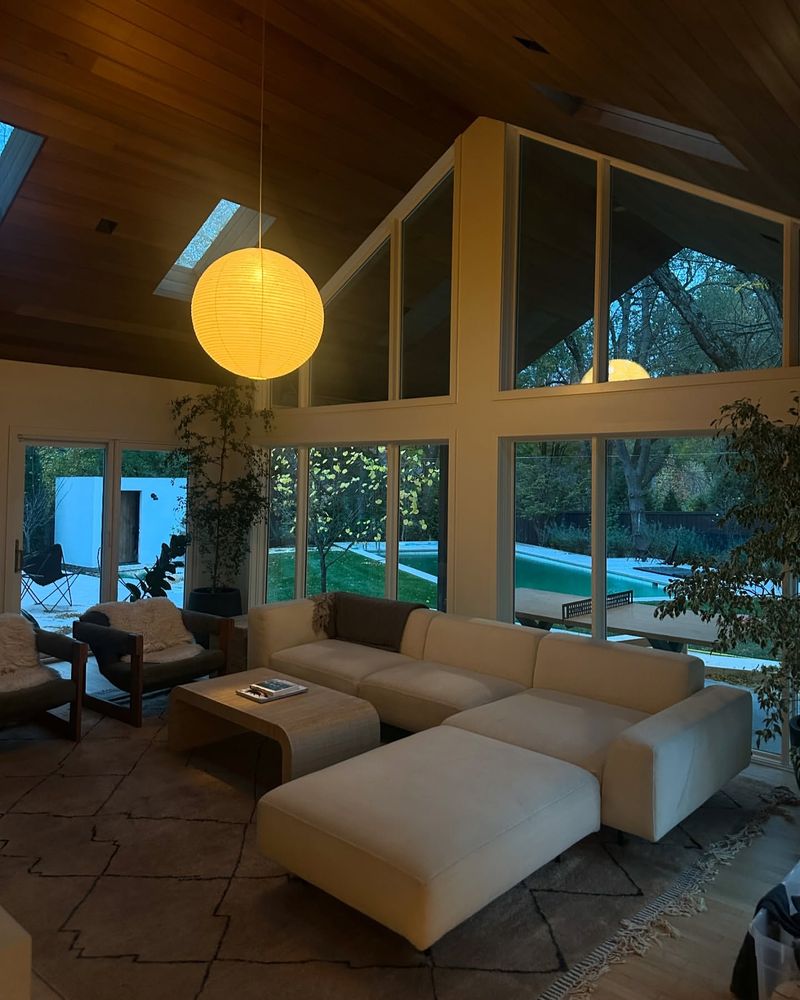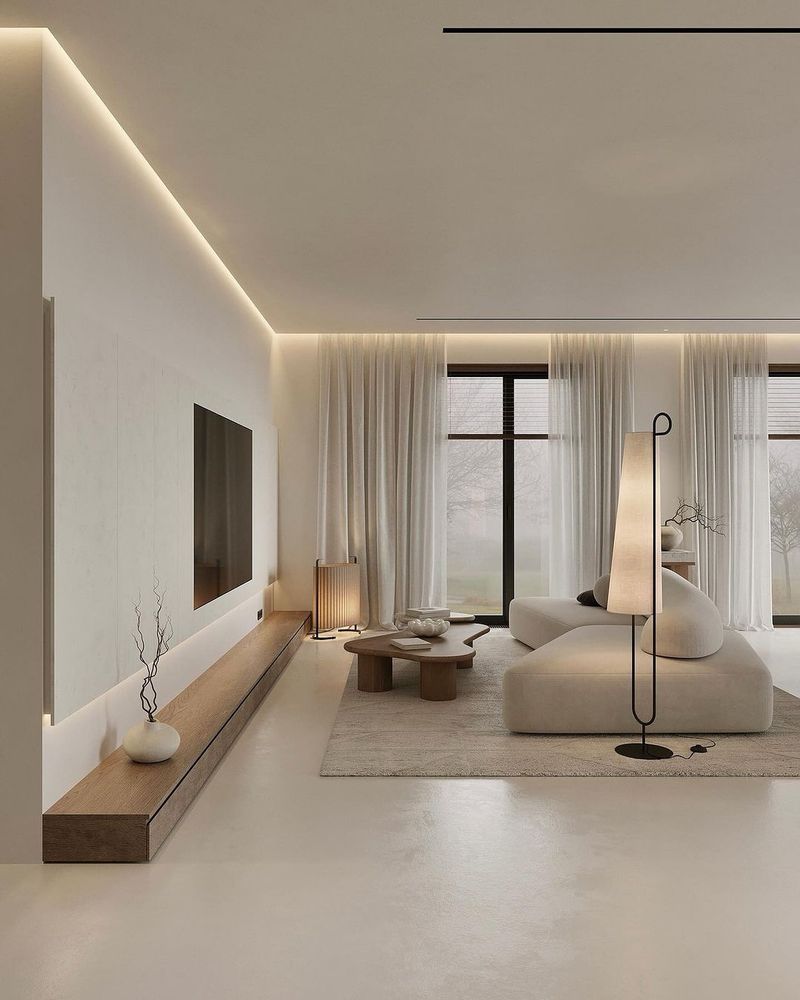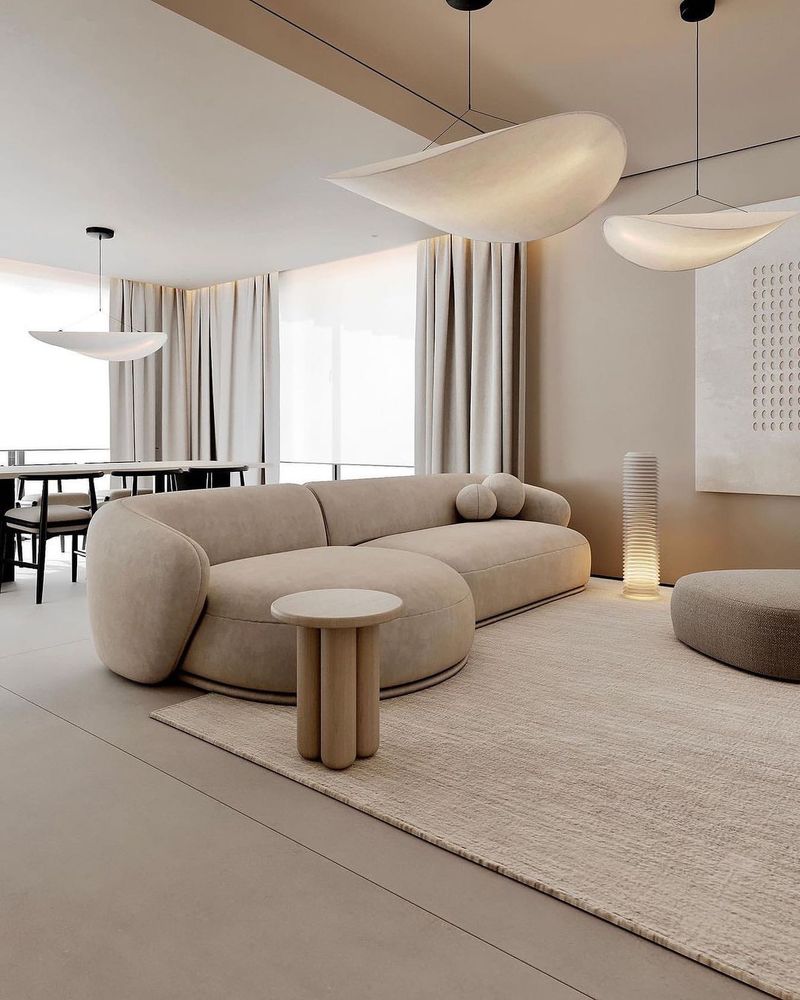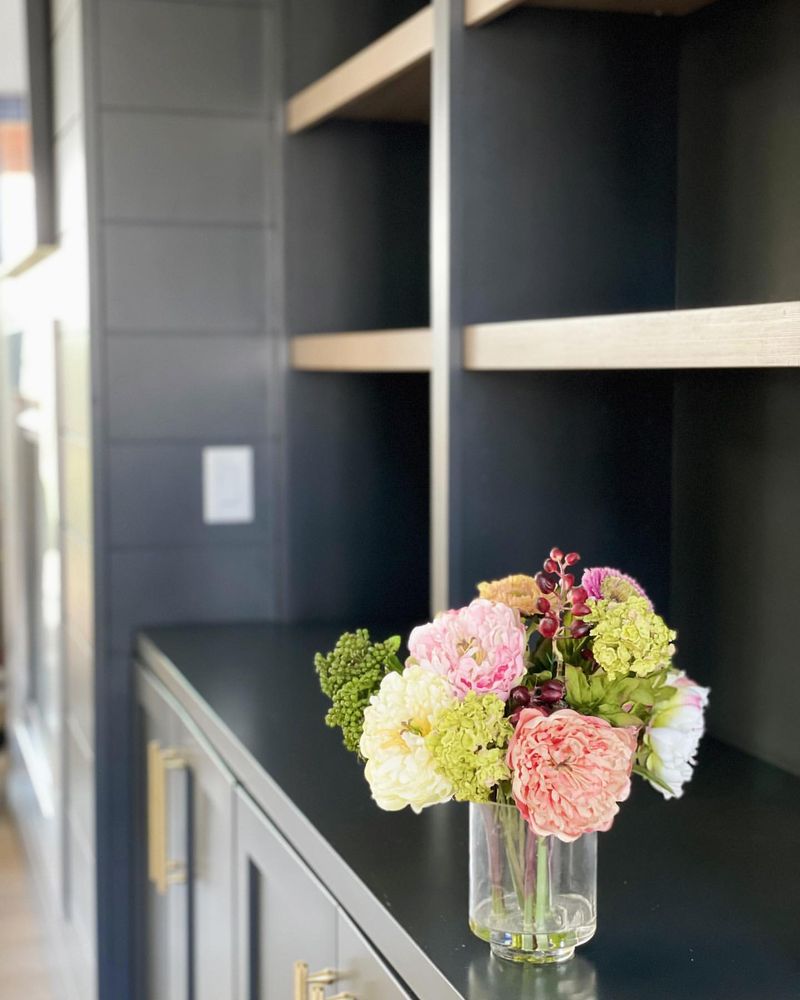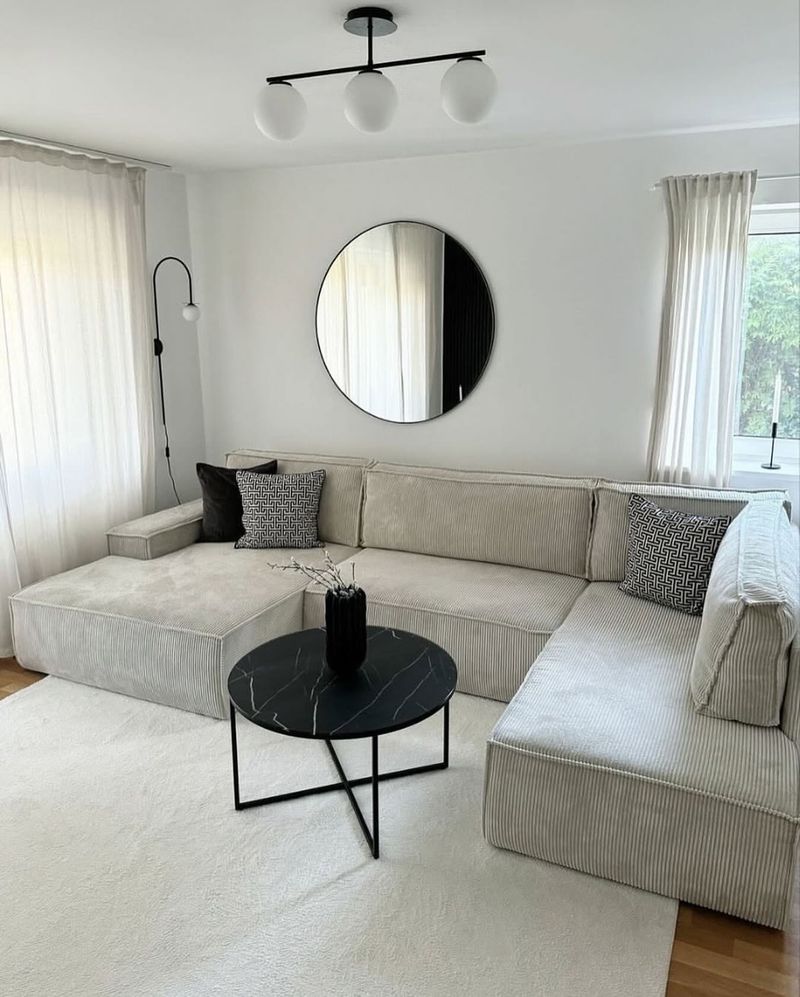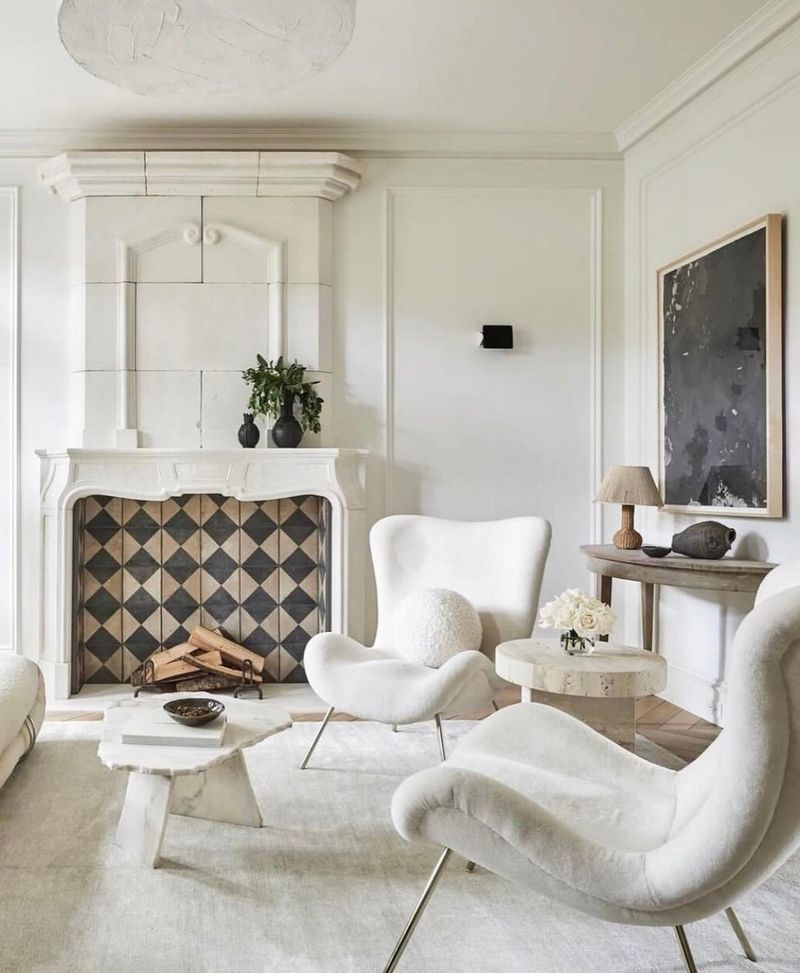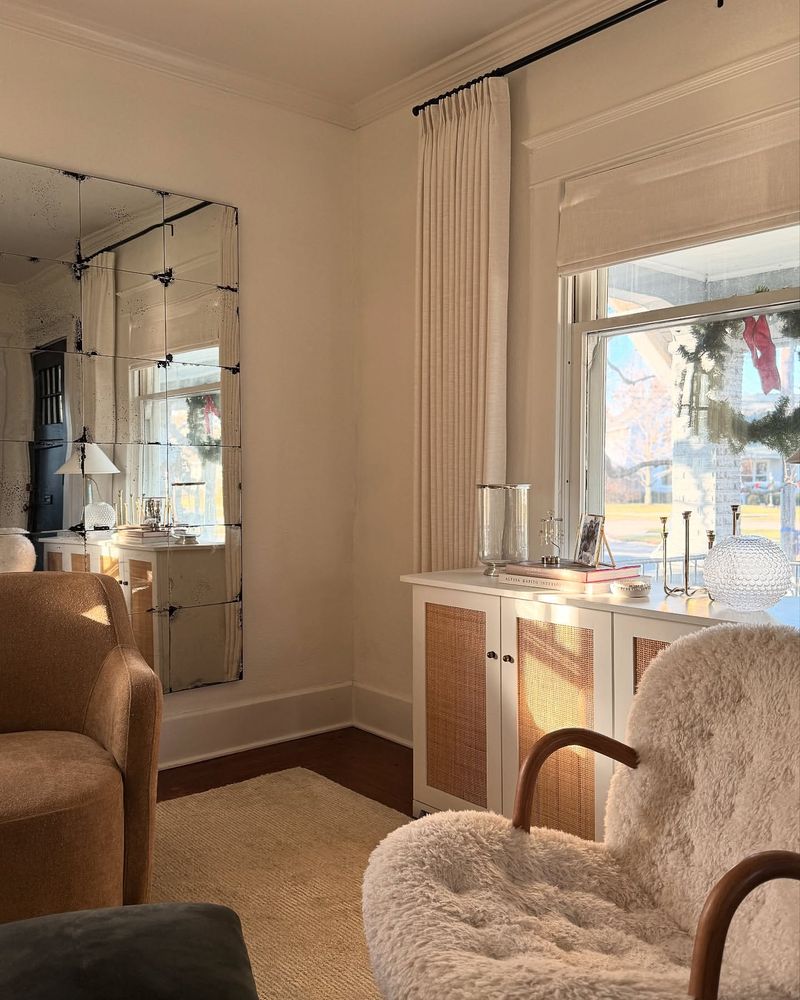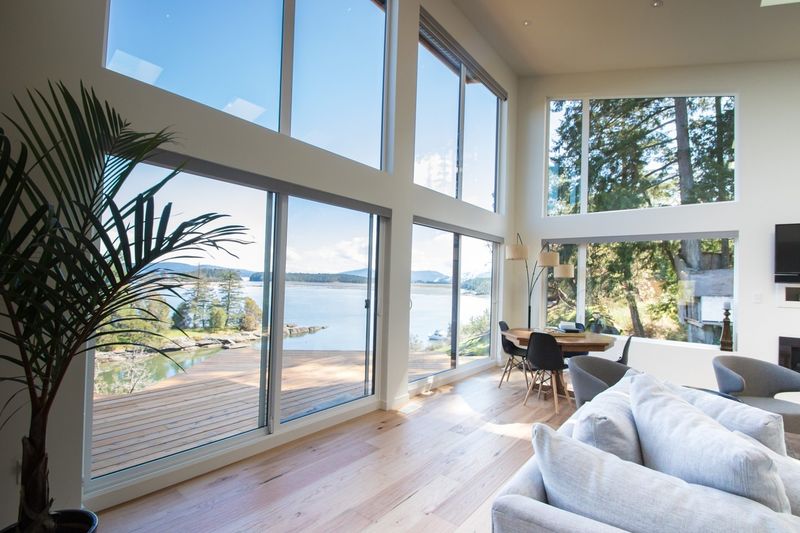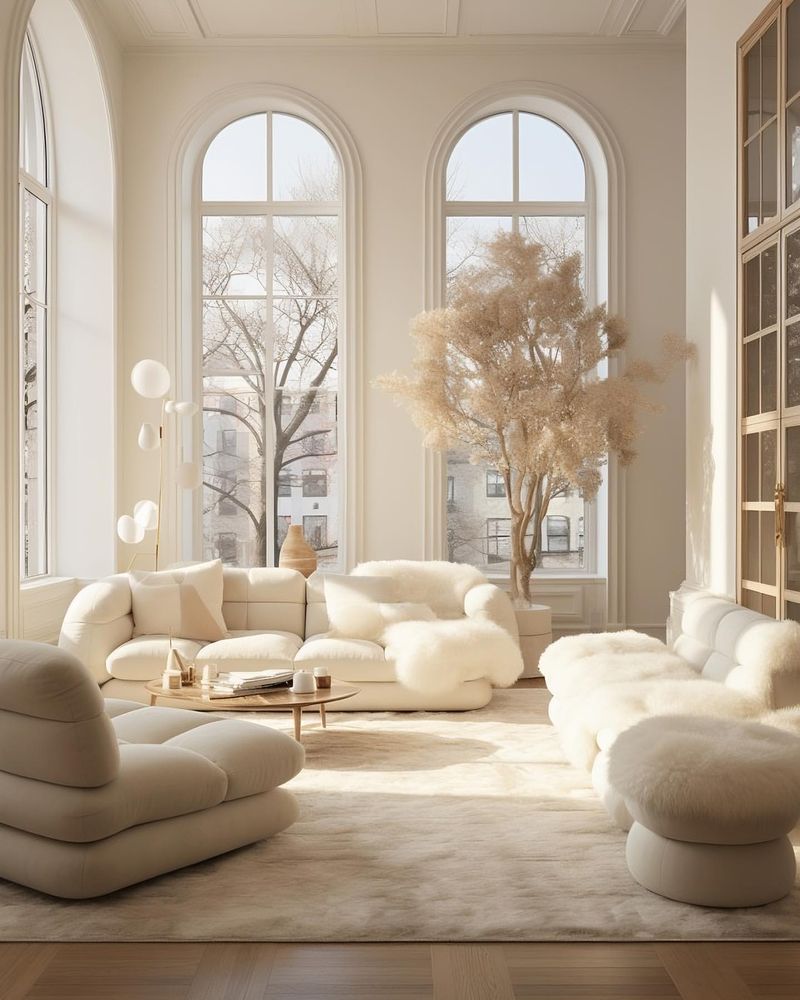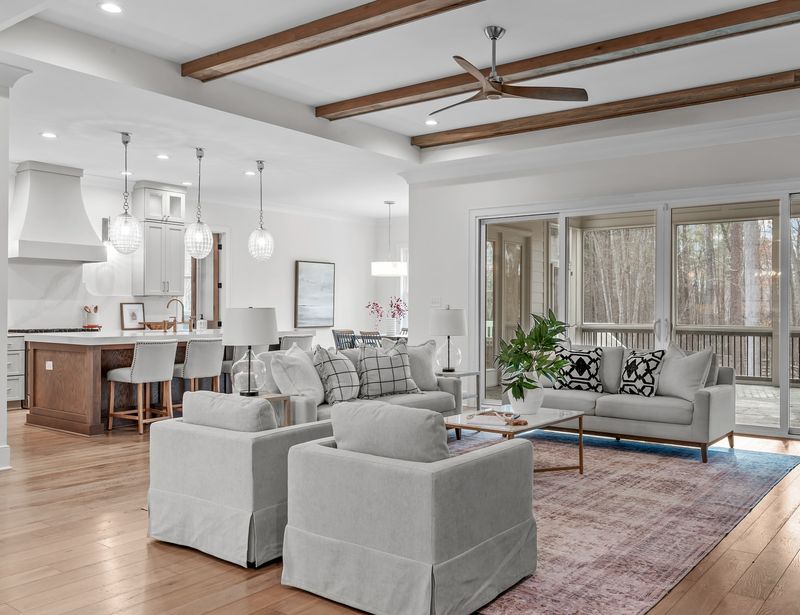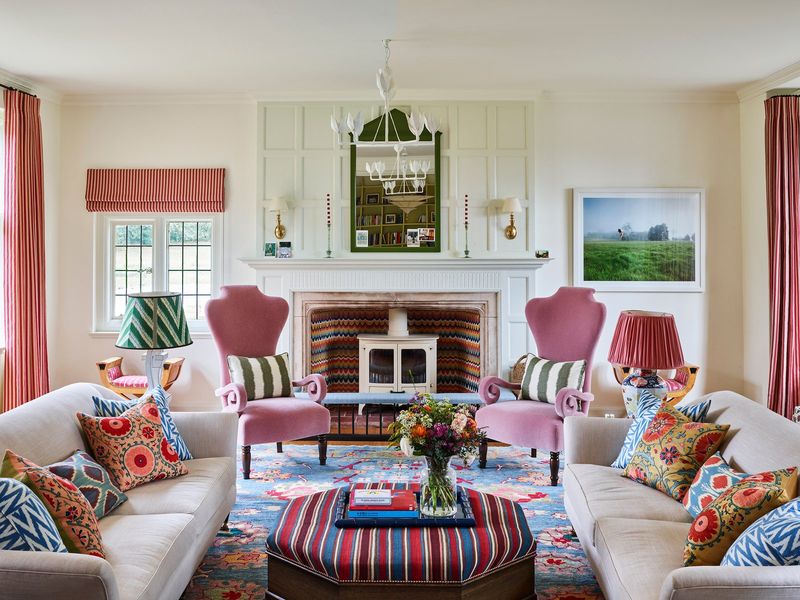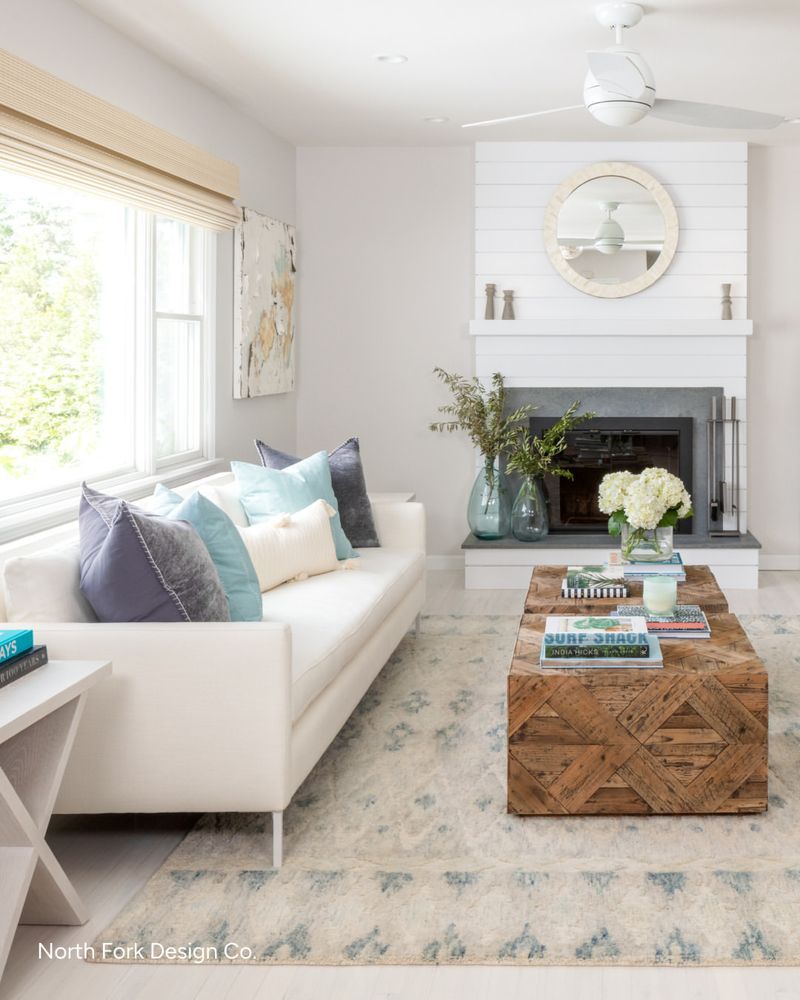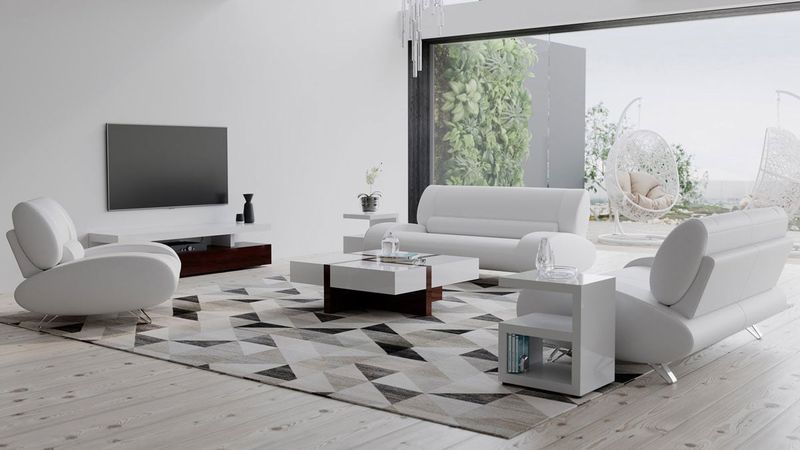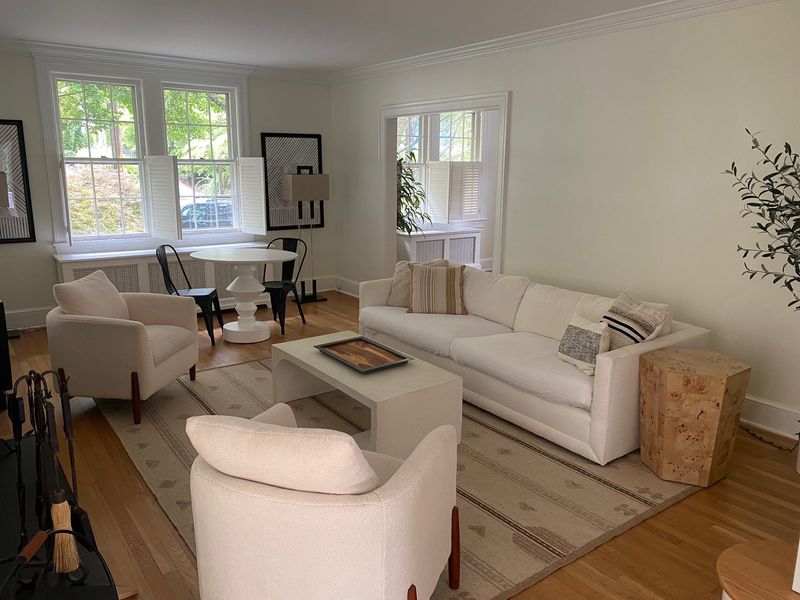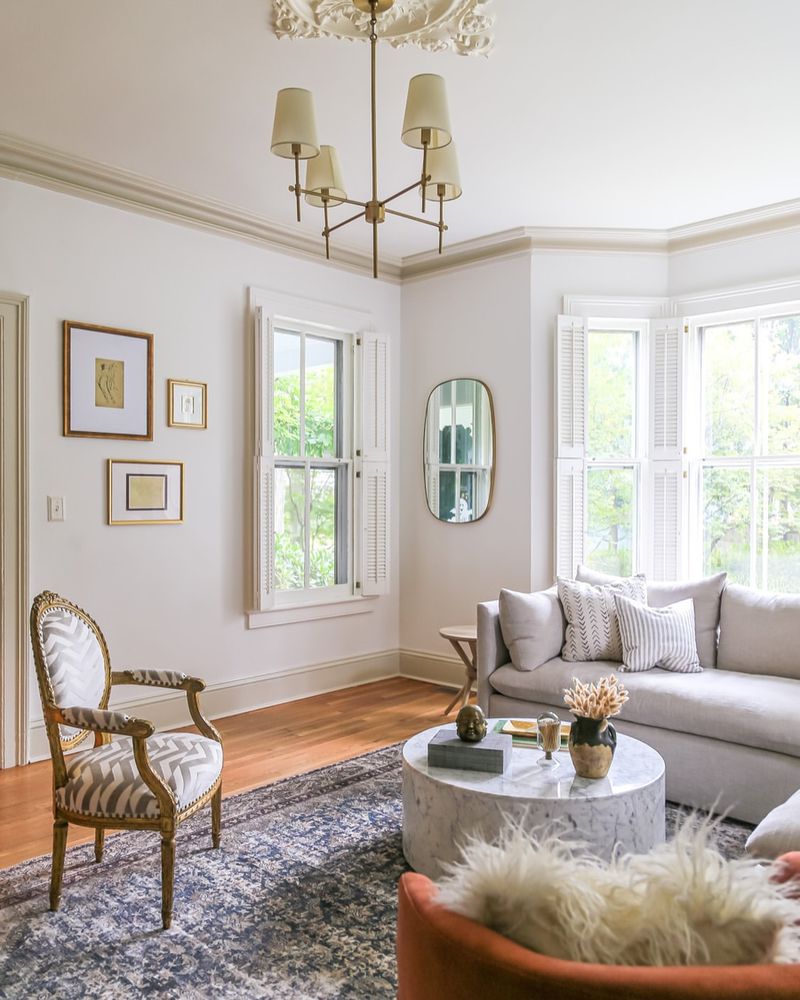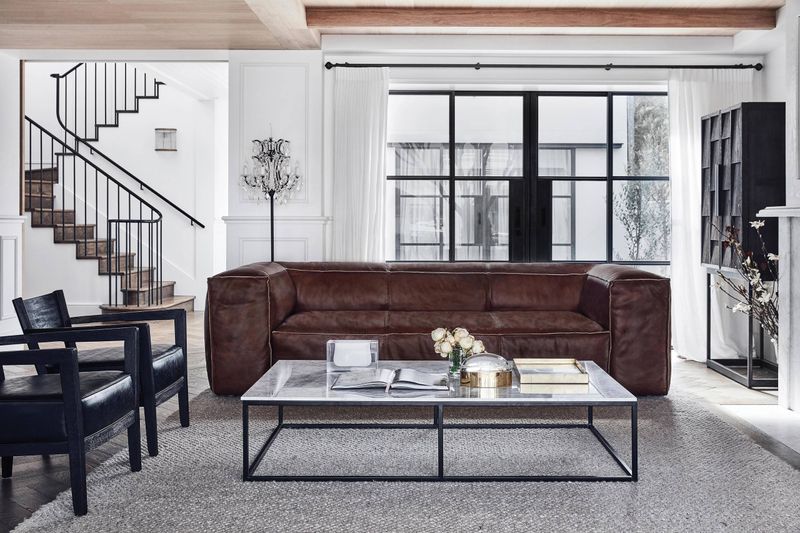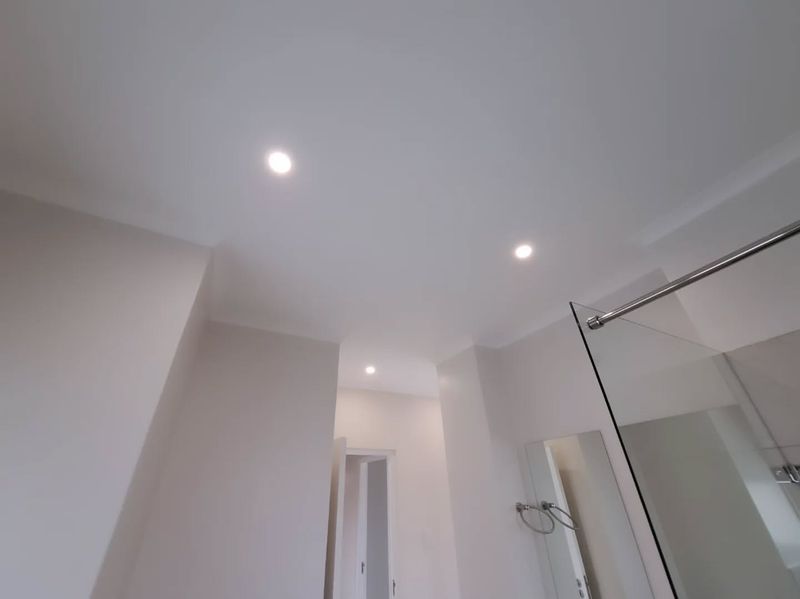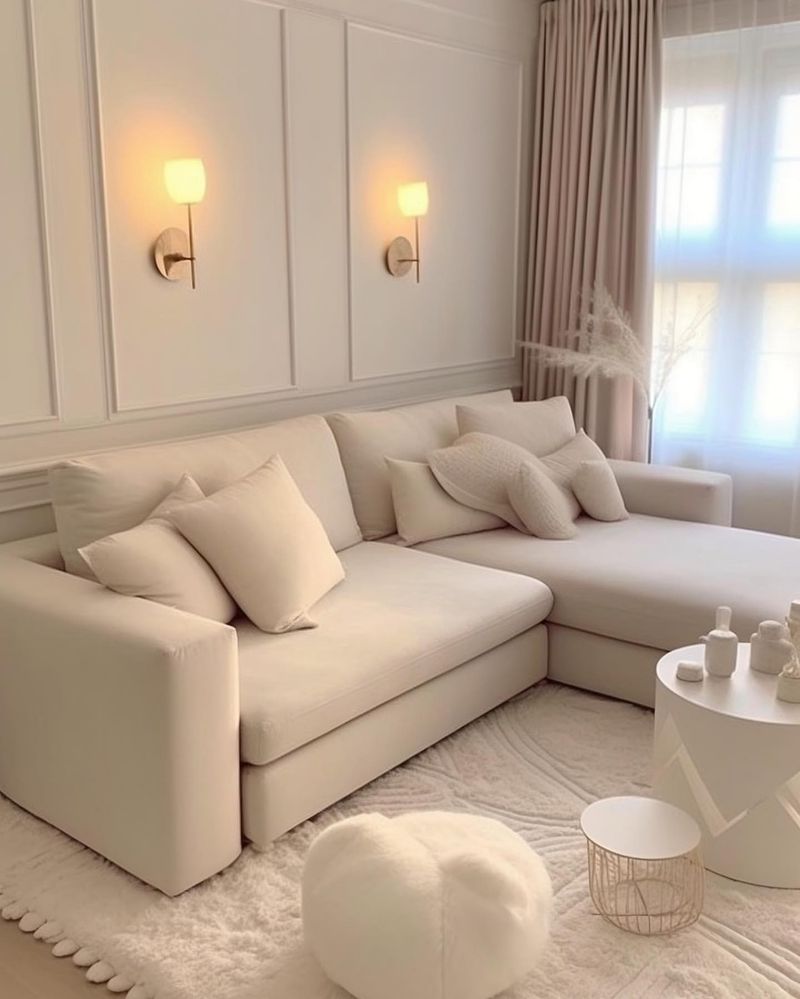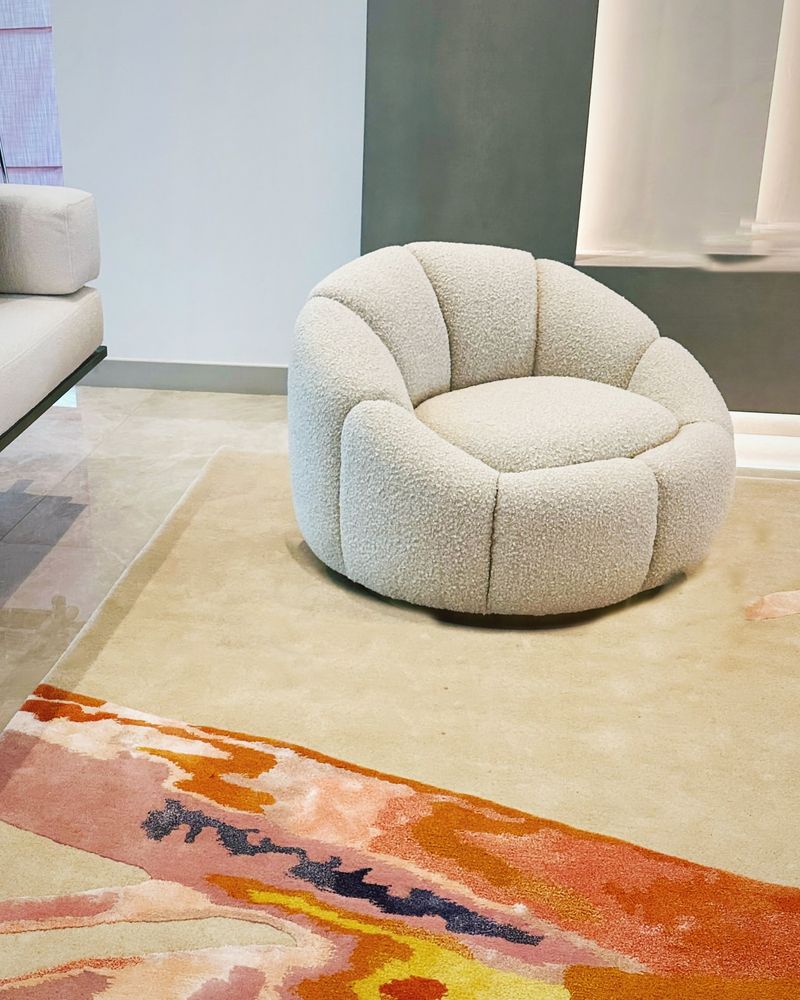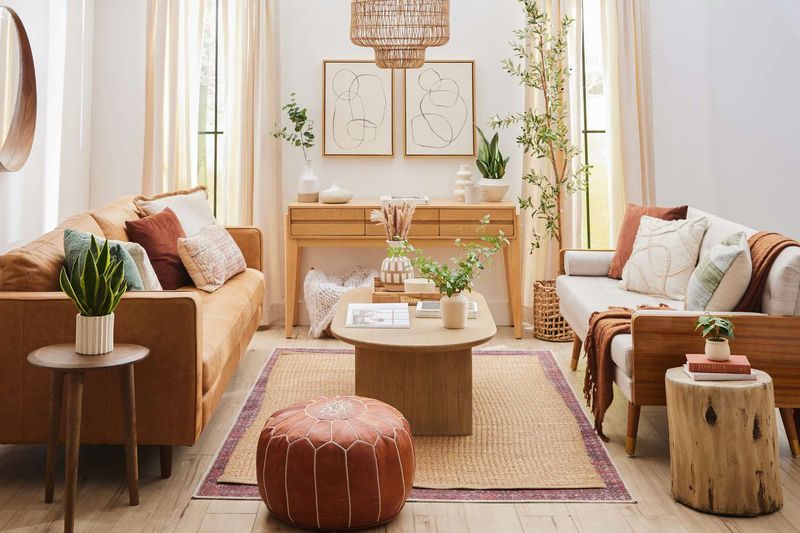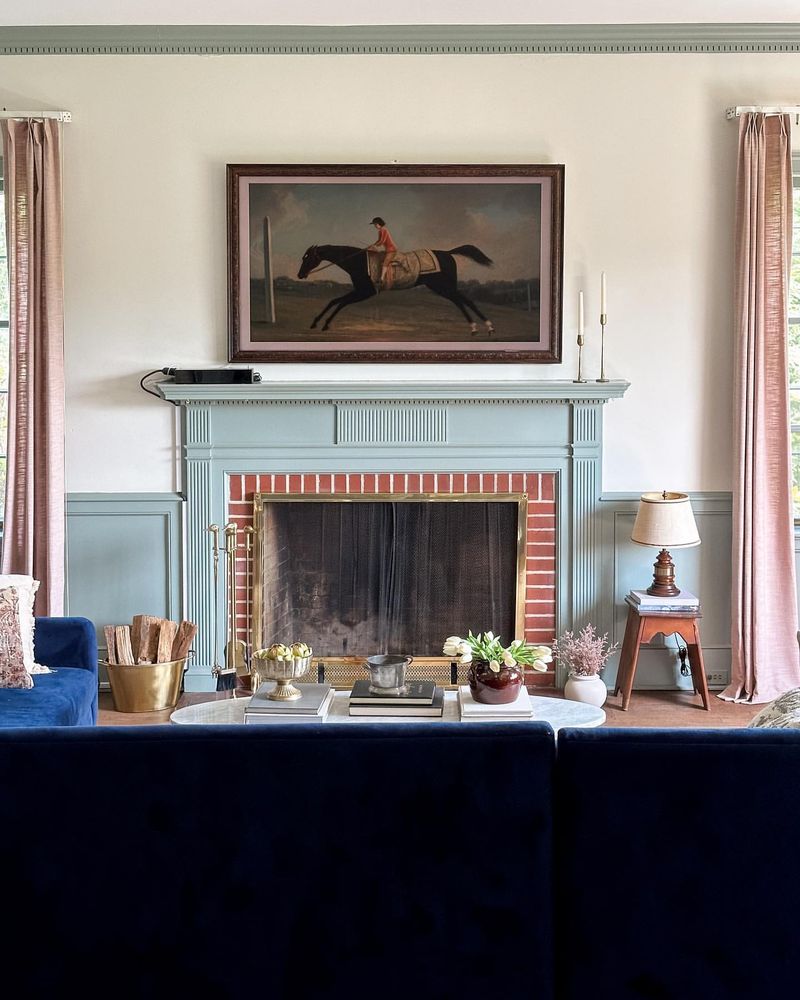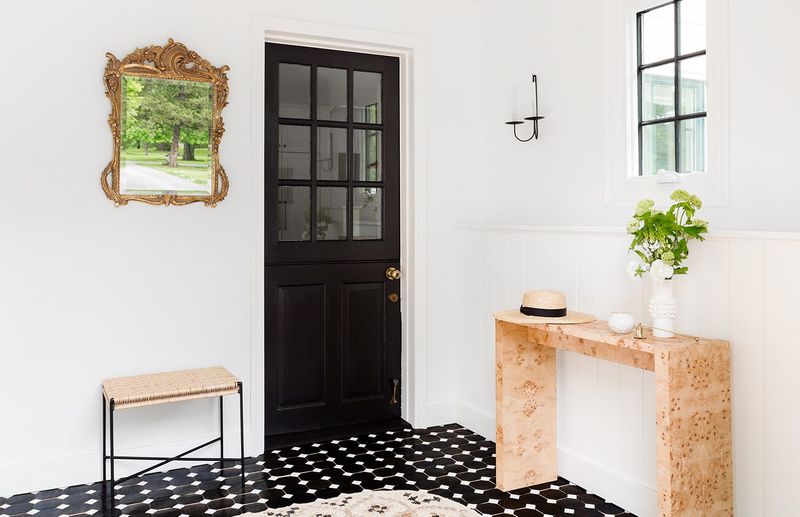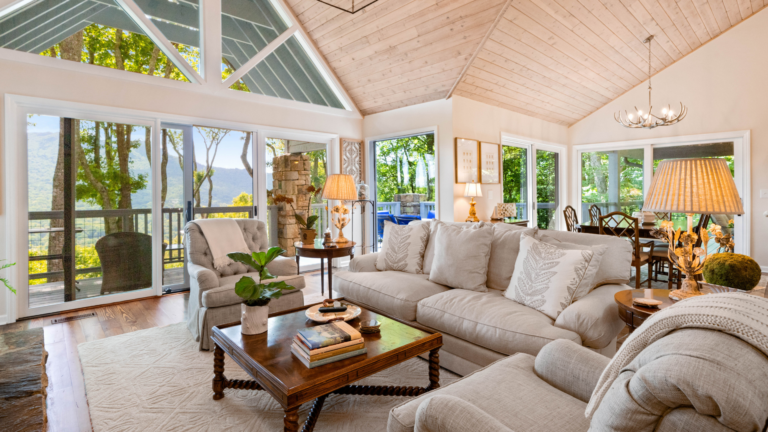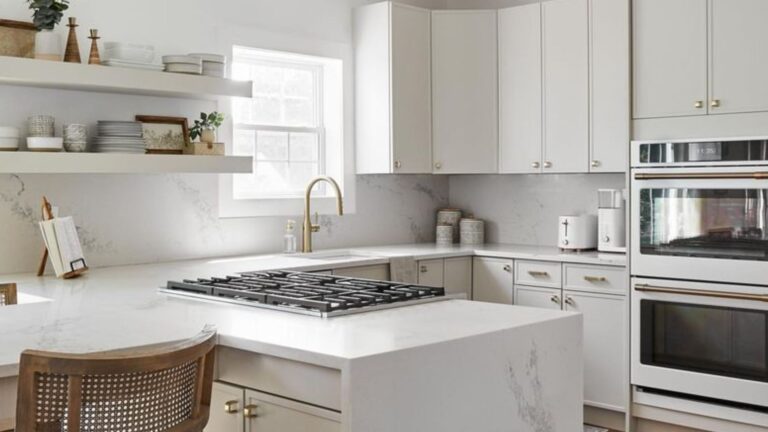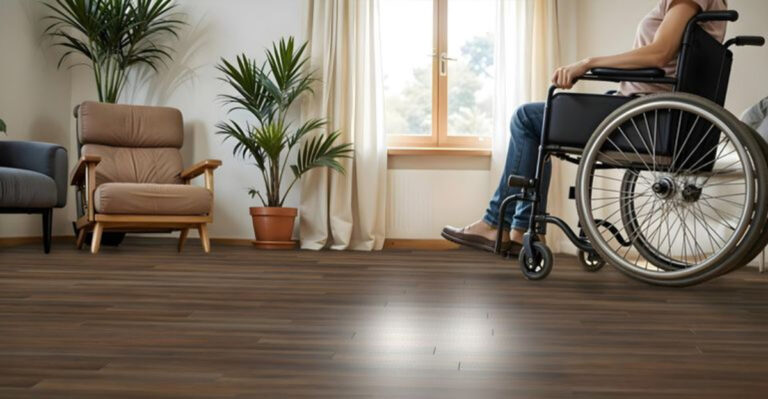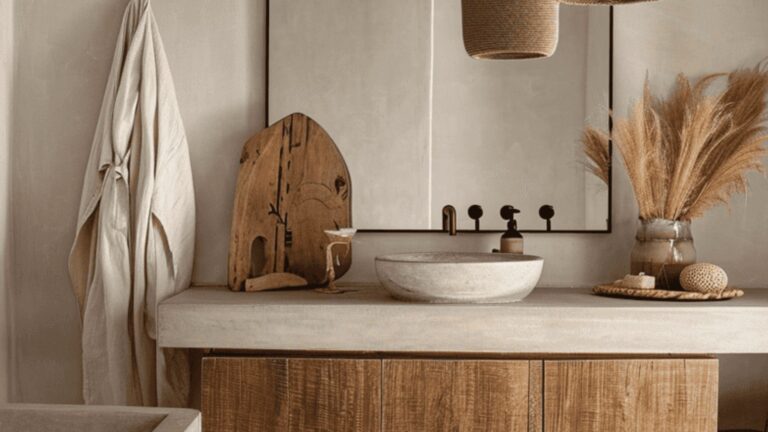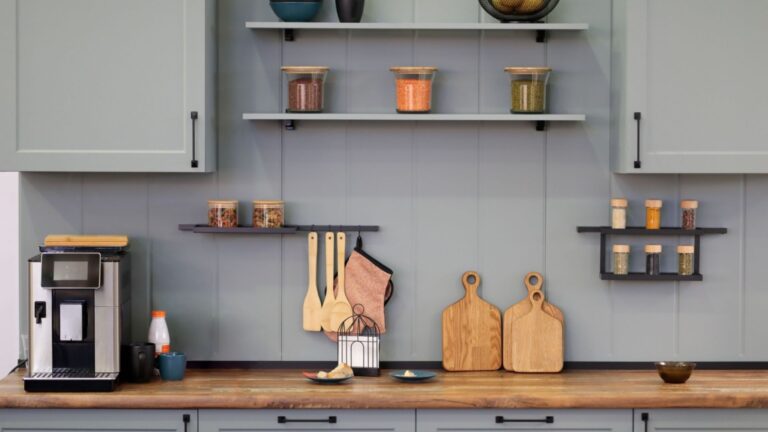27 Things That Always Make Your Living Room Look Empty According to Designers
Ever walked into a living room and instantly felt something was amiss? Designers often pinpoint subtle elements that contribute to a room feeling barren or unfinished.
While minimalism is a style, there’s a fine line between beautifully sparse and empty. Let’s explore 27 common culprits that might be making your living room feel devoid of life, according to expert designers.
From lighting mishaps to furniture arrangement blunders, these insights will guide you in creating a more inviting, complete space.
1. Bare Walls
When your walls are bare, your living room can feel stark and uninviting. Adding artwork or wall decor can instantly transform the feel. Opt for a mix of mirrors, paintings, and shelves displaying personal mementos.
This balance offers both visual interest and personal touch. Designers suggest considering the scale of your wall space; larger walls benefit from oversized pieces, while smaller walls might need a more delicate approach to avoid clutter. Personalize your selections to truly make the space your own.
2. Lack of Rugs
Rugs anchor a space, adding warmth and texture. A floor without one may appear vast and empty. Incorporating a rug can define zones within your living room, creating a cozy ambiance.
Choose a rug that complements your furniture and color scheme. It doesn’t have to be a bold pattern; sometimes a subtle design is all that’s needed to tie everything together. A strategically placed rug adds depth, making your living room feel more inviting and complete.
3. Sparse Furniture Placement
Furniture pushed against the walls can make a room feel hollow. Float pieces away from walls to create intimate seating areas. This arrangement encourages conversation and gives the room a more dynamic flow.
Try grouping furniture to form distinct areas within the living room. This setup utilizes space efficiently and makes the room feel balanced and harmonious. Incorporate side tables and lamps to enhance these zones, providing both functionality and style.
4. Inadequate Lighting
Proper lighting is crucial for a warm, inviting living room. Insufficient lighting can make a space feel cold and empty. Layer lighting by combining overhead fixtures, floor lamps, and table lamps.
This mix allows you to adjust the ambiance according to the occasion. Designers recommend using dimmers for flexibility. Additionally, varying the light sources can highlight different areas, adding depth and interest to the room. Lighting is more than functional; it’s a key element in setting the mood.
5. Neglecting Greenery
Plants bring life and vibrancy to any space. A living room without greenery can feel sterile and uninspired. Incorporate a variety of plants to add color and texture.
Even a small potted plant on a coffee table can make a difference. Consider the light requirements of each plant to ensure they thrive.
Greenery not only enhances aesthetics but also improves air quality, creating a healthier environment. Choose plants that suit your lifestyle, whether low-maintenance or lush and leafy.
6. Ignoring Textiles
Textiles like cushions and throws add warmth and comfort. A couch without these elements can appear bare and unwelcoming. Choose textiles that complement your color scheme and personal style.
Mix patterns and textures for a layered look that adds depth. Designers suggest incorporating seasonal textiles for an easy refresh. Whether it’s a chunky knit blanket or patterned cushions, these accents make your living room feel more lived-in and cozy.
7. Empty Shelves
Empty shelves are a missed opportunity to showcase personality and interests. Fill them with a mix of books, art, and decorative items to add character.
A well-styled shelf draws the eye and creates a focal point. Group similar items together to maintain balance, and vary heights for visual interest.
Designers recommend regularly updating shelf displays to keep the room feeling fresh and inspiring. Shelves should tell a story, reflecting your personal journey and style.
8. Lack of Personal Touch
Without personal elements, a living room can feel like a showroom. Incorporate family photos, travel souvenirs, or heirloom pieces to make the space uniquely yours.
These touches create a connection and tell a story about who you are. Designers emphasize the importance of balance – too many personal items can overwhelm. Display a curated selection that brings joy and sparks conversation, turning your living room into a reflection of your life and experiences.
9. Monochrome Color Scheme
A monochrome palette can sometimes feel too uniform, leading to a sense of emptiness. Introduce pops of color through accents like cushions, art, or flowers.
These elements add interest and break up the monotony. Designers suggest experimenting with different shades within your chosen palette to create subtle variations. Adding a bold accent wall or colorful artwork can transform the space, making it feel dynamic and full of life.
10. Neglected Corners
Empty corners can make a room feel incomplete. Utilize these spaces by adding a chair, small table, or plant to create a cozy nook.
Consider fitting a small bookshelf or a reading lamp for functionality. Designers advocate for making every part of the room purposeful. A thoughtfully decorated corner can serve as a reading spot or a quiet retreat, adding both character and function to your living room.
11. Unadorned Windows
Bare windows can leave a room feeling exposed and unfinished. Consider adding curtains or blinds to bring warmth and privacy.
Choose window treatments that complement your decor and enhance the room’s natural light. Designers recommend layering with sheer and heavy drapes for versatility. This not only adds texture but allows control over the atmosphere. Properly dressed windows frame your view, tying the entire room together elegantly.
12. Absence of Art
Art breathes life into a room. Without it, a space can feel dull and uninspired. Add paintings, photographs, or sculptures that resonate with your style.
Art creates focal points and sparks conversation, enhancing the room’s character. Designers suggest selecting pieces that complement your color scheme and reflect personal interests. This not only adds depth but makes your living room uniquely yours, turning it into a vibrant, engaging space.
13. Minimal Accessories
Accessories add the finishing touch to a room. Without them, a living room can feel stark and impersonal. Incorporate items like vases, candles, and sculptures for added interest.
Choose accessories that reflect your style and color palette. Designers recommend grouping items in odd numbers for a balanced look. These elements offer opportunities to introduce new textures and materials, making the room feel complete and thoughtfully decorated.
14. Overly Open Floor Plan
An open floor plan is great for spaciousness, but too much openness can make a room feel empty. Define areas with rugs, furniture arrangements, or screens to create distinct zones.
Designers suggest using open shelving or room dividers to maintain openness while adding structure. This approach ensures each area serves a purpose, making the space feel cohesive and connected without sacrificing flow.
15. Mismatch of Styles
A mix of styles can create visual chaos, leaving a room feeling unsettled. Aim for a cohesive look by balancing different elements thoughtfully.
Designers suggest sticking to a consistent color palette, even when blending styles. This unifies the space and creates harmony. Consider repeating textures or shapes for a more integrated design. A well-curated mix of styles reflects personality without feeling disjointed or incomplete.
16. Single Seating Area
Having only one seating area can limit the room’s functionality. Add additional chairs or a love seat to create multiple social zones.
Designers recommend arranging seating to encourage conversation and interaction. This not only makes the room more inviting but also maximizes its usability. Different seating options allow for flexibility, adapting to various activities or guest needs.
17. Uniform Furniture Height
Furniture at the same height can make a room feel monotonous. Varying heights add interest and dynamic flow.
Incorporate tall bookshelves or low coffee tables to break up uniformity. Designers suggest playing with scale by mixing different sizes and proportions. This creates a layered look that enhances the room’s overall design, making it feel more lively and engaging.
18. Lack of Focal Point
Without a focal point, a room can feel aimless. Introduce an element like a fireplace, artwork, or a statement piece that draws attention.
This anchors the space and provides a visual center. Designers recommend choosing a focal point that complements your decor and enhances the room’s theme. A well-chosen focal point not only adds interest but also guides the room’s layout and design.
19. Stark White Paint
While white walls can create a sense of space, they can also feel stark and cold. Add warmth with colorful accents or feature walls.
Designers suggest using paint, wallpaper, or wall decals to add personality. Complementary colors can make the room feel inviting and vibrant. Even subtle changes like painted moldings or colored shelving can dramatically alter the room’s ambiance.
20. Unbalanced Proportions
Mismatched proportions can make a room feel disjointed. Balance is key in creating a harmonious space.
Ensure furniture and decor complement each other in size. Designers recommend arranging elements to maintain visual equilibrium. This approach creates a cohesive look that feels well-planned and inviting, enhancing the room’s overall appeal.
21. Plain Ceiling
Ignoring the ceiling can make a space feel lacking. Add interest with architectural elements like beams or decorative moldings.
Consider painting the ceiling a contrasting color for added depth. Designers suggest incorporating lighting fixtures to highlight these features. A well-designed ceiling can transform a room, adding sophistication and balance to the overall aesthetic.
22. Empty Table Surfaces
Bare table surfaces can leave a room feeling sterile. Decorate with books, decorative trays, or plants for added interest.
Choose items that reflect your personal style and enhance the room’s theme. Designers recommend varying heights and textures for a visually appealing display. This approach not only adds personality but also makes the room feel more lived-in and welcoming.
23. Lack of Contrasting Elements
Without contrast, a room can feel flat. Introduce differing elements in color, texture, or style to add depth.
Designers recommend using contrasting colors or materials to create visual tension. This not only highlights individual pieces but also enhances the room’s overall design. Contrast is essential in making a space feel dynamic and engaging.
24. Unvaried Patterns
Repetitive patterns can make a room feel monotonous. Vary patterns in textiles and decor to add interest.
Mixing different designs creates a lively and engaging atmosphere. Designers suggest using complementary patterns that harmonize with the room’s color scheme. This approach not only adds visual intrigue but also showcases creativity and style.
25. Overly Symmetrical Layout
While symmetry offers balance, too much can feel rigid. Introduce asymmetry to add interest and flow.
Designers suggest offsetting furniture arrangements or varying decor placements. This creates a more relaxed, natural feel. Asymmetry breaks up the predictability and infuses life into the space, making it feel more dynamic.
26. Bare Mantelpiece
An empty mantelpiece is a missed opportunity for decor. Add items like candles, photos, or seasonal decorations for warmth.
Choose pieces that resonate with the room’s theme and your personal style. Designers recommend layering items for a rich, textured look. This not only enhances the mantel’s appeal but also adds character to the living room, making it feel more complete.
27. Neglected Entryway
The entryway sets the tone for your living room. A neglected one can make the entire space feel empty. Add a console table, mirror, or artwork to greet guests warmly.
Designers suggest incorporating functional decor like hooks or baskets for added practicality. A thoughtfully designed entryway invites guests and enhances the living room’s overall appearance, ensuring a cohesive and welcoming environment.

